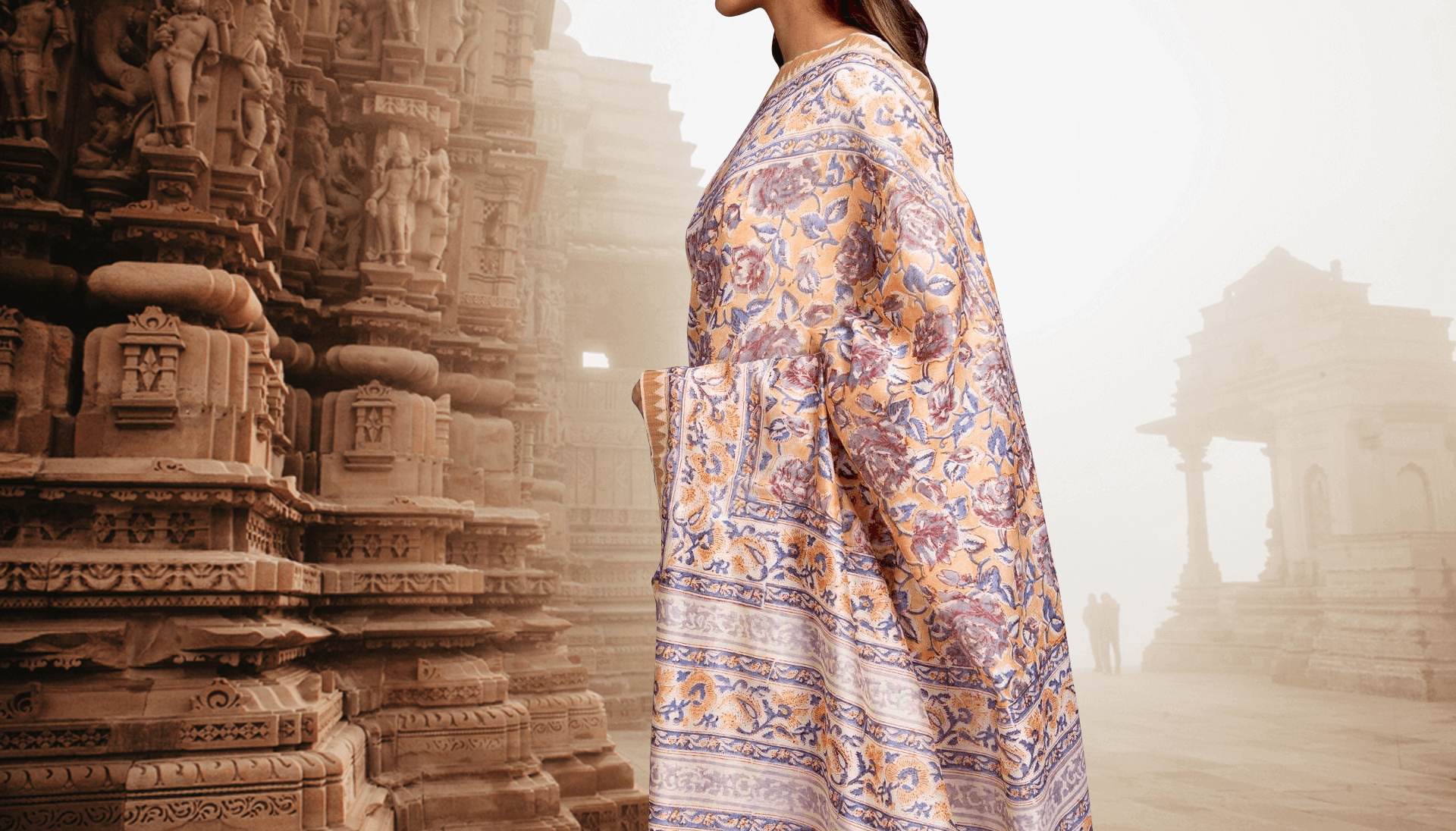Chanderi Fabric - History and Evolution of This Royal Weaves

The charm of chanderi fabric- especially chanderi sarees is celebrated widely amongst the connoisseurs of fine handloom products. Chanderi sarees are categorised under the umbrella of expensive traditional wear for women, along with banarasi sarees, kanjivaram sarees, etc. It is fascinating how silk threads can be hand-woven or machine-woven in various ways to create dazzling drapes. These sarees are synonymous with the heritage of India and represent the culture of India in one of its best forms.
Coming back to chanderi, the history and origin of this sheer fabric make for quite an interesting read. The word ‘chanderi’ comes from the Chanderi Town of Ashok Nagar district, situated in Madhya Pradesh. This serene states carries a lot of historical significance and it is believed that its centre for weaving was established somewhere between 7th and 2nd century BC. However, it rose to a prominent position around the 11th century as it became an important trade route for the traders or Gujarat, Mewar and Deccan regions among others. Apparently, some records state that chanderi sarees were commonly woven for royal households between 12th and 13th centuries AD.
Another interesting fact about chanderi comes from the Vedic scriptures that suggest the fabric was introduced by Lord Krishna’s evil cousin- Shishupal. In Maasir-I-Alamgir (1658-1707), it’s written that Aurangzeb was very keen on gifting khilat i.e. a ceremonial robe given to honour someone by royalty/ a superior person. The robe or cloth was embroidered with pure gold and silver, making it super expensive. The sheer beauty, softness and transparency of this fabric is truly unparalleled.
Types of Chanderi Fabric
Chanderi apparel can be easily found in three major fabrics namely- pure silk chanderi, pure cotton chanderi and silk-cotton blend chanderi. Also referred to as ‘woven air’, chanderi fabric is known for its lightweight and finesse. The glossy texture and considerably lightweight sets it apart from all other fabrics, hence making it a popular choice. Chanderi sarees owe its lightweight to extra-fine yarns which don’t undergo the degumming process. Commonly, motifs of animals, flowers, peacocks and celestial figures can be seen adorning chanderi clothes.
Weaving
Initially, chanderi fabric sarees were deftly woven with handspun cotton yarn that used to be of 300 counts, making it almost as fine as muslin cloth. The fine thread count for cotton chanderi comes from a special root called Kolikanda. Initially, chanderi sarees were handwoven with handspun cotton yarn with the thread count of 300 which made it as fine as the muslin cloth of Dhaka. For ages, Chanderi fabric was patronised and flourished well under the Mughal era and the Rajput kingdom.
Exquisite Features of Chanderi Fabric
Often referred to as ‘woven air’ owing to its lightness and finesse, sarees made from chanderi fabric are set apart by their lightweight and glossy texture which is starkly different from other woven fabrics of the country. Different types of needles are used for different making various motifs like flowers, bootis, etc.
Chanderi Sarees at Craft Maestros
With markets flooded with lots of clothes sold under the label of ‘authentic’ apparel, the enthusiasts of fine handloom products often find it difficult to pick the right clothes for their beloved wardrobes. At Craft Maestros, we have a fine collection of exquisite chanderi sarees and chanderi dupattas for your liking. Our entire collection is delicately handcrafted in the homes of our nationally awarded master artisans and carries an essence of the Indian heritage and are a testament to the legacy of this fine craft that has evolved since the beginning of the history of this fabric, apparently around 2nd century BC.



















